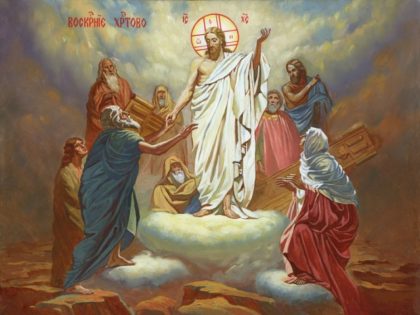by George N. Chaldakov*,
Scripta Scientifica Medica 2017 Dec; 49: xx-xx.
Original articles
COLCHICINE IN THE THERAPY OF CARDIOVASCULAR DISEASE:
THE BULGARIAN CONTRIBUTION
Running title: Colchicine and cardiovascular diseases
Correspondence: chaldakov@yahoo.com
Abstract
Over the past decades, advances in the knowledge of colchicine about its mechanisms of cellular actions have led to potential new uses for this very old drug. Here, I present briefly the Bulgarian contribution to possible potential of microtubule-disassembling agents (antitubulins), such as colchicine, in the therapy of various cardiovascular diseases such as atherosclerosis, atrial fibrillation, pericarditis, cardiac hypertrophy-associated heart failure, and systemic necrotizing vasculitis.
Scr Sci Med 2017; 49 (4):xx-xx.
Keywords: colchicine, microtubules, antitubulins, cardiovascular disease, inflammation, fibrosis
Introduction
The saga of Colchicum autumnale (commonly known as autumn crocus, meadow saffron or naked ladies), from which colchicine was extracted, has been around for some 3 000 years, as described by ancient writers as the remedy of choice for gout patients suffering debilitating pain due to acute arthritis. Today, this therapeutic effect is known to be due to its anti-inflammatory action. However, in the last 30-40 years colchicine has also been used to treat familial Mediterranean fever (and related amyloidosis and recurrent pericarditis), Behçet’s disease, acute febrile neutrophilic dermatosis (Sweet’s syndrome), epidermolysis bullosa acquisita, leukocytoclastic vasculitis, aphthous stomatitis, also liver cirrhosis, scleroderma and other fibro-inflammatory diseases (1, 2).
Microtubules and colchicine
Cytoplasmic and spindle microtubules (MT) are 25 nm in diameter cytoskeletal structures composed of self-assembling dimers of α-tubulin and β-tubulin in collaboration with various MAP (MT-associated proteins). Colchicine binds to β-tubulin, resulting in the inhibition of formation MT and/or disassembly of preformed MT. In effect, colchicine-sensitive processes are (i) for interphase cells, protein secretion (1-10), migration, inflammasome-mediated inflammation, receptor-mediated signaling, and (ii) for mitotic cells, proliferation, this latter effect being out of the scope of the present article.
The Bulgarian contribution
The concept of possible therapeutic potential of MT-disassembling agents (antitubulins), such as colchicine, has emerged in the Laboratory of Electron Microscopy, Department of Anatomy and Histology, Medical Institute, Varna, Bulgaria, studying the secretory function of vascular smooth muscle cells (3, 4, 6-10). Preliminary proof from data on the new concept was presented in a lecture delivered by the author at the International Symposium on Smooth Muscle of the Artery, held Heidelberg, Germany, October 1973, which was published in 1975 (3; see related papers in 1, 4-15).
From this time onward, the antitubulin concept has fully supported up to date (16-25). It has also been demonstrated that excess MT density is important for myocardial contractile dysfunction, suggesting that this may be one mechanism contributing to the development of heart failure due to cardiac hypertrophy. It appears that colchicine may restore the contractile activity of cardiomyocytes (26, 27).
Conclusion
The effectiveness of low-dose colchicine (referred to as LoDoCo) – oral colchicine at subantimitotic doses of 0.5 – 1.0 mg/daily – could become one of the breakthroughs in cardiovascular translational research. Further experimental and clinical studies will definitely be required before gaining real confidence in this kind of anti-tubulin therapy in cardiovascular disease. Colchicine is simply an example of this approach, which may lead to developing new and more specific drugs with anti-inflammatory and anti-fibrotic effects in cardiovascular disease, including coronary reocclusion after angioplasty and coronary artery bypass grafting.
However, we must recall Robert Frost’s refrain:
WE DANCE ROUND IN A RING AND SUPPOSE,
BUT THE SECRET SITS IN THE MIDDLE AND KNOWS.
Acknowledgements
This Bulgarian contribution was made possible due to the staunch support and creative collaboration over the years of my brain-and-heart friends (BHF) Anna Kadar, Harry Jellinek, Peter I. Ghenev, Jörg Grünwald, Yasuo Uehara, YukioYamori, Takashi Fujiwara, Plamen Panayotov, Anton B. Tonchev and Stanislav Yanev. The linguistical improvement of the manuscript made by Professor Denys Wheatley (University of Aberdeen, UK) is greatly appreciated. I apologize to the authors of many relevant articles that have not been quoted here for reasons of brevity.

* Department of Anatomy and Cell Biology, Medical University, Varna, Bulgaria
––––––––––––––––––––––––––––––––––––––––––––––-
References
1. Chaldakov GN, Deyl Z, Vankov VN. Colchicine: possible new application of its antifibrotic (antisecretory) action. Physiol Bohemoslov 1987;36:1-7.
2. Solak Y, Siriopol D, Yildiz A, Yilmaz MI, Ortiz A, Covic A, et al. Colchicine in renal medicine: New virtues of an ancient friend. Blood Purif 2017;43:125-135. DOI: 10.1159/000454669
3. Chaldakov GN, Nikolov SD. Ultrastructure of the arterial smooth muscle cell. In: Wolf S, Werthessen NT, editors. The Smooth Muscle of the Artery. New York City, NY: Plenum Press. Adv Exp Med Biol 1975; 57:14-20.
4. Chaldakov G, Nikolov S, Vankov V. Fine morphological aspects of the secretory process in arterial smooth muscle cells. Part 2. Role of microtubules. Acta Morph. Acad Sci Hung 1977; 25:167-174.
5. Chaldakov GN, Kadar A. Microtubules in arterial smooth muscle cells in vivo and in tissue culture. An electron microscope study. In: W. Hauss, R. Wissler, R. Lehman, editors. State of Prevention and Therapy of Human Arteriosclerosis and in Animal Models. Rheinisch-Westfalische Akad. Der Wissenschaften, 1978, p. 211-231
6. Chaldakov GN, Nikolov S, Vankov V. Can antitubuhns be antiatherosclerotic agents? A hypothesis based on electron microscope data [abstract]. In: 6th Hungarian Atherosclerosis Conference, Dobogoko, 10-12 September, 1981, p. 11A.
7. Chaldakov GN. Antitubulins – a new therapeutic approach for atherosclerosis? Atherosclerosis 1982; 44: 385-390
8. Chaldakov GN, Vankov VN. Morphological aspects of secretion in the arterial smooth muscle cell, with special reference to the Golgi complex and microtubular cytoskeleton. Atherosclerosis 1986;61:175-192.
DOI: 10.1016/0021-9150(86)90137-1
9. Chaldakov GN, Vankov VN. Antifibrotic approach in the therapy of arterial occlusive diseases: new considerations. In: G. Trubestein, editor. Conservative Therapy of Arterial Occlusive Disease. Stuttgart, New York, Georg Thieme Verlag, 1986, p. 224-226.
10. Chaldakov GN, Grünwald J. Effect of colchicine on the ultrastructure of secretory-state smooth muscle cells from the rabbit artery wall. Exp Pathol 1987;31:1-9.
11.Chaldakov GN, Nabika T, Nara Y, Yamori Y. Cyclic AMP- and cytochalasin B-induced arborization in cultured aortic smooth muscle cells: its cytopharmacological characterization. Cell Tissue Res 1989;255:435-442. PMID: 2538239
12. Chaldakov GN. Anti-inflammatory drugs and ischemic heart disease: new considerations (a cell biologist’s proposal to cardiologists). J Am Coll Cardiol 1991;17:1445-1446.
13. Chaldakov GN. Proposal for clinical trials using anti-inflammatory drugs in the therapy of angina pectoris, myocardial infarction and coronary restenosis after angioplasty and bypass grafting. Med Hypotheses 1992;37:74-75.
14. Yanev S, Fiore F, Hinev A, Ghenev PI, Hristova MG, Panayotov P, et al. From antitubulins to trackins. Biomed Rev 2016; 27: 59-67.
15. Chaldakov GN, Kisheva AR, Ghenev P. Quo vadis, atherogenesis? Part 1. Smooth muscle cell secretion – may foe become friend in the fight against the vulnerable atherosclerotic plaque. Biomed Rev 2017; 28: in press.
16. Vaidya K, Arnott C, Martínez GJ, Ng B, McCormack S, Sullivan DR, et al. Colchicine therapy and plaque stabilization in patients with acute coronary syndrome: A CT Coronary Angiography Study. JACC Cardiovasc Imaging 2017. DOI: 10.1016/j.jcmg.2017.08.013
17. Lennerz C, Barman M, Tantawy M, Sopher M, Whittaker P. Colchicine for prevention of post-cardiac procedure atrial fibrillation: Meta-analysis of randomized controlled trials. Int J Cardiol 2017;249:127-137. DOI: 10.1016/j.ijcard.2017.08.039
18. Salih M, Smer A, Charnigo R, Ayan M, Darrat YH, Traina M, et al. Colchicine for prevention of post-cardiac procedure atrial fibrillation: Meta-analysis of randomized controlled trials. Int J Cardiol 2017;243:258-262. DOI: 10.1016/j.ijcard.2017.04.022
19. Hemkens LG, Ewald H, Gloy VL, Arpagaus A, Olu KK, Nidorf M, et al. Cardiovascular effects and safety of long-term colchicine treatment: Cochrane review and meta-analysis. Heart 2016;102:590-596. DOI: 10.1136/heartjnl-2015-308542
20. Lee JZ, Singh N, Howe CL, Low S-W, Huang JJ, Ortega G, et al.Colchicine for prevention of post-operative atrial fibrillation. J Am Coll Cardiol Clin Electrophysiol.2016; 2:78–85. DOI:10.1016/j.jacep.2015.09.016
21. Campbell KB, Cicci TA, Vora AK, Burgess LD. Beyond gout: Colchicine use in the cardiovascular patient. Hosp Pharm 2015;50:859-867 DOI: 10.1310/hpj5010-859
22. Nidorf SM, Eikelboom JW, Budgeon CA, Thompson PL. Low-dose colchicine for secondary prevention of cardiovascular disease. J Am Coll Cardiol 2013;61:404-410. DOI: 10.1016/j.jacc.2012.10.027
23. Vogel RA, Forrester JS. Cooling off hot hearts: A specific therapy for vulnerable plaque? J Am Coll Cardiol 2013; 61:411-412. DOI: 10.1016/j.jacc.2012.10.026
24. Alsarah A, Alsara O, Laird-Fick HS. Cardiac manifestations of Familial Mediterranean fever. Avicenna J Med 2017; 7: 158–163. DOI: 10.4103/ajm.AJM_78_17
25. Antonopoulos AS, Papanikolaou E, Vogiatzi G, Oikonomou E, Tousoulis D. Anti-inflammatory agents in peripheral arterial disease. Curr Opin Pharmacol 2017;39:1-8. DOI: 10.1016/j.coph.2017.11.001
26. Cheng G, Kasiganesan H, Baicu CF, Wallenborn JG, Kuppuswamy D, Cooper G 4th. Cytoskeletal role in protection of the failing heart by β-adrenergic blockade. Am J Physiol Heart Circ Physiol 2012;302:H675-H687. DOI: 10.1152/ajpheart.00867.2011
27. Cheng G, Takahashi M, Shunmugavel A, Wallenborn JG, DePaoli-Roach AA, Gergs Y, et al. Basis for MAP4 dephosphorylation-related microtubule network densification in pressure overload cardiac hypertrophy. J Biol Chem 2010; 285: 38125–38140. DOI:10.1074/jbc.M110.148650




